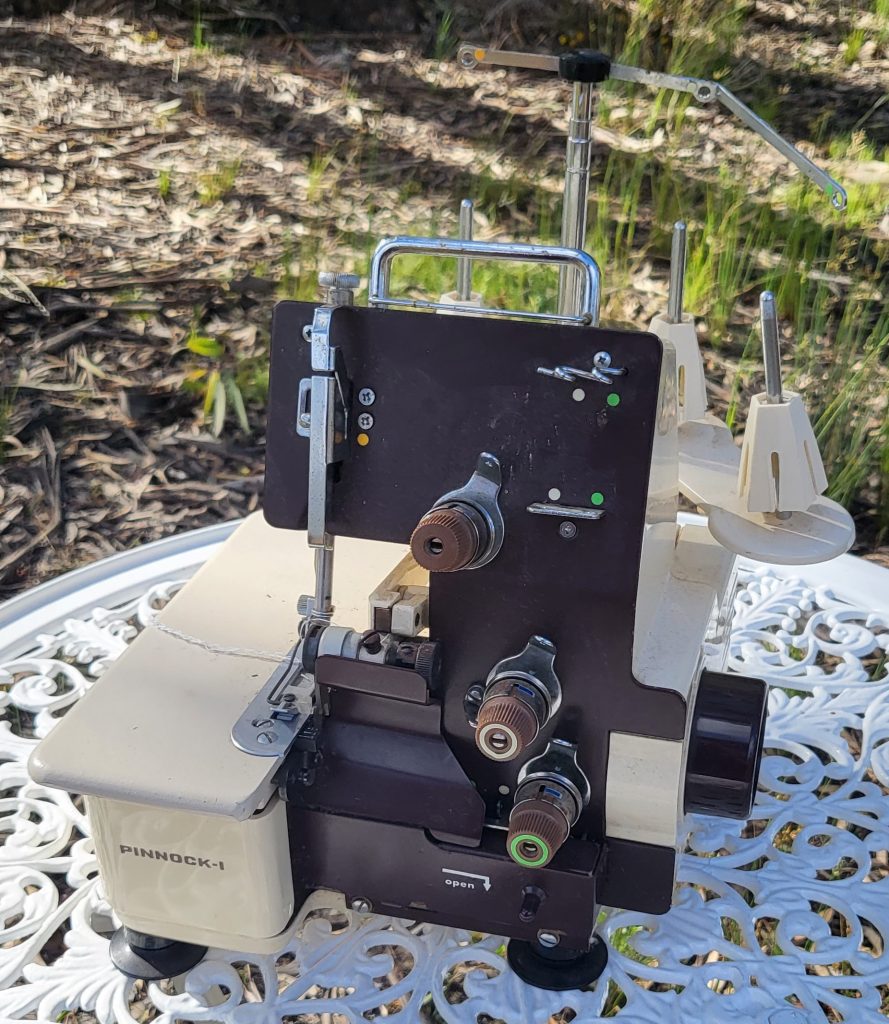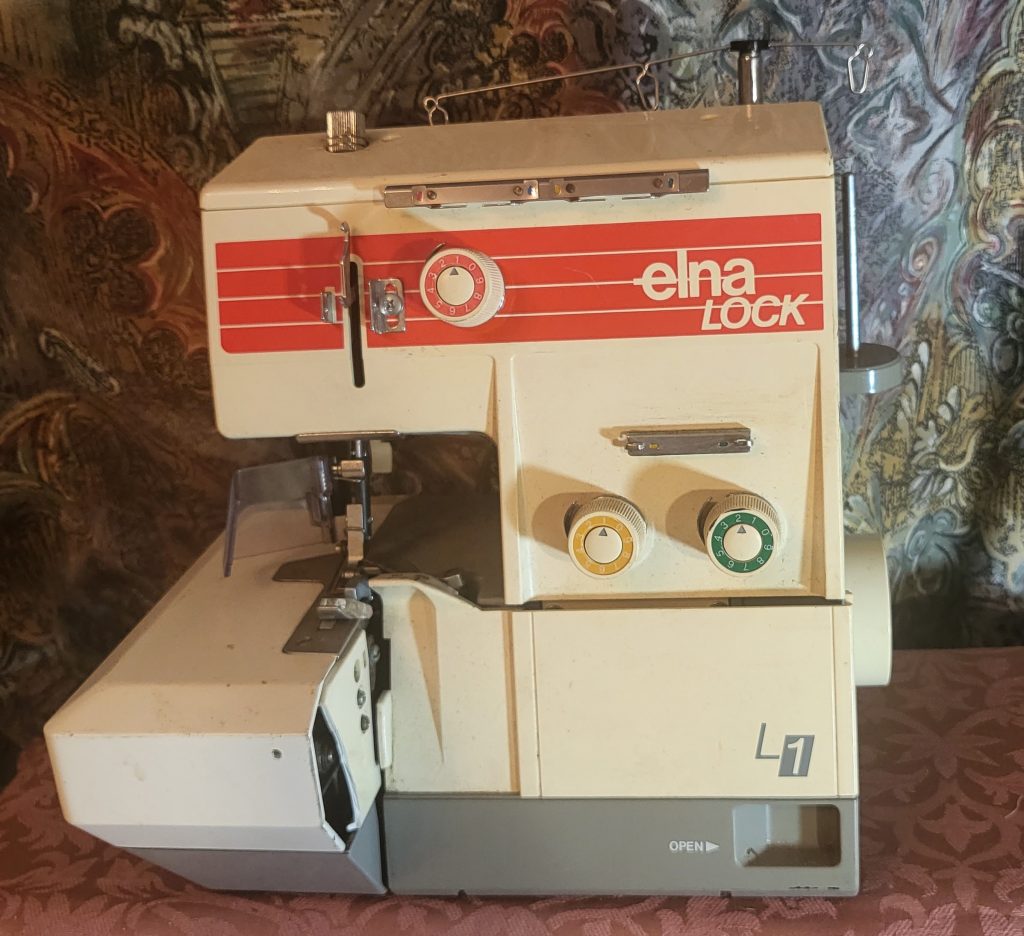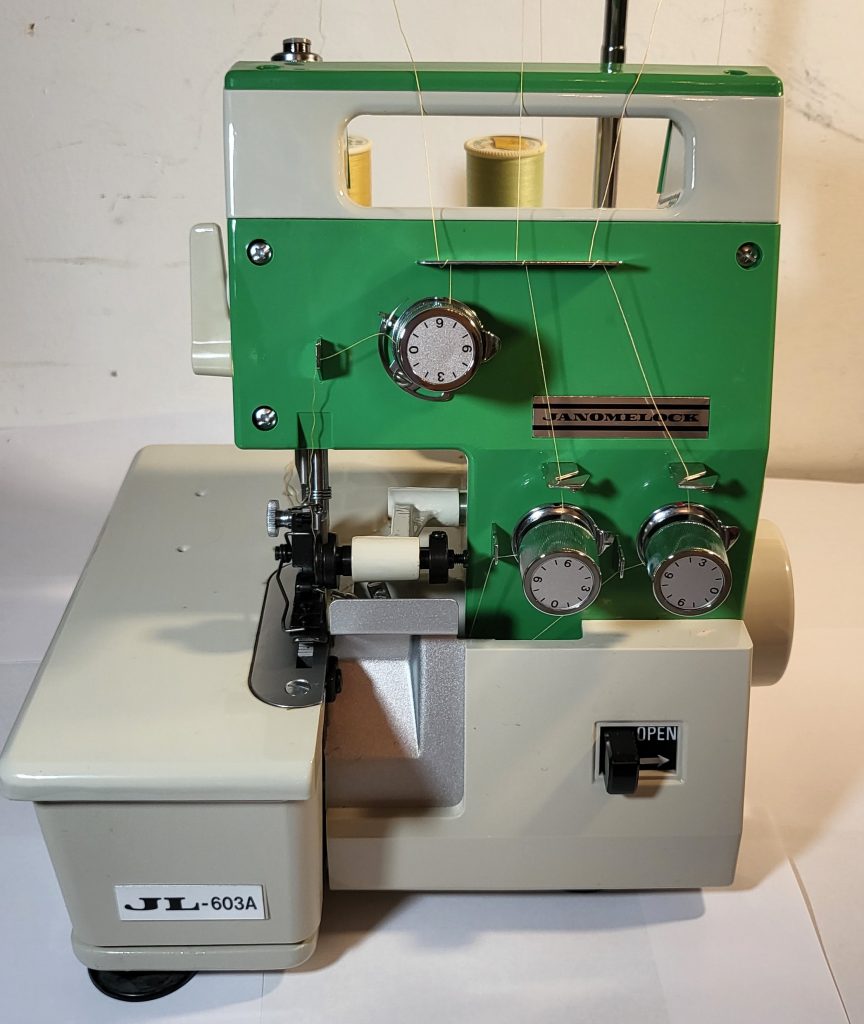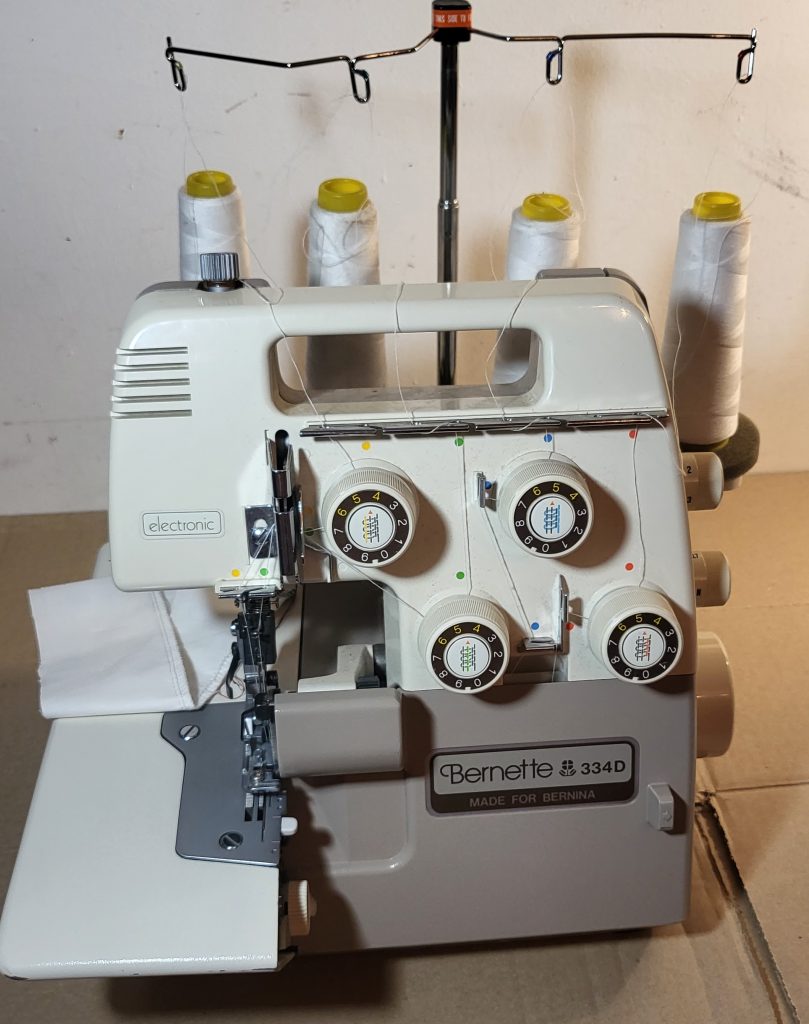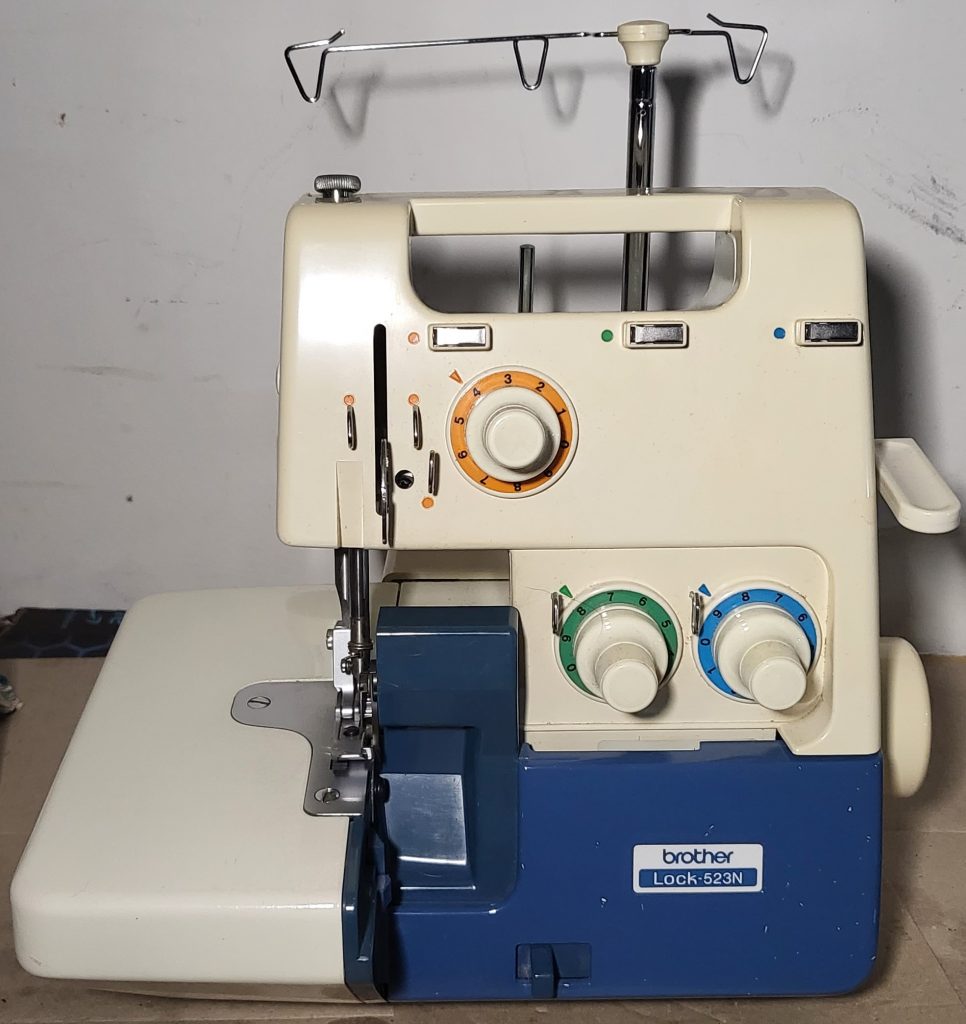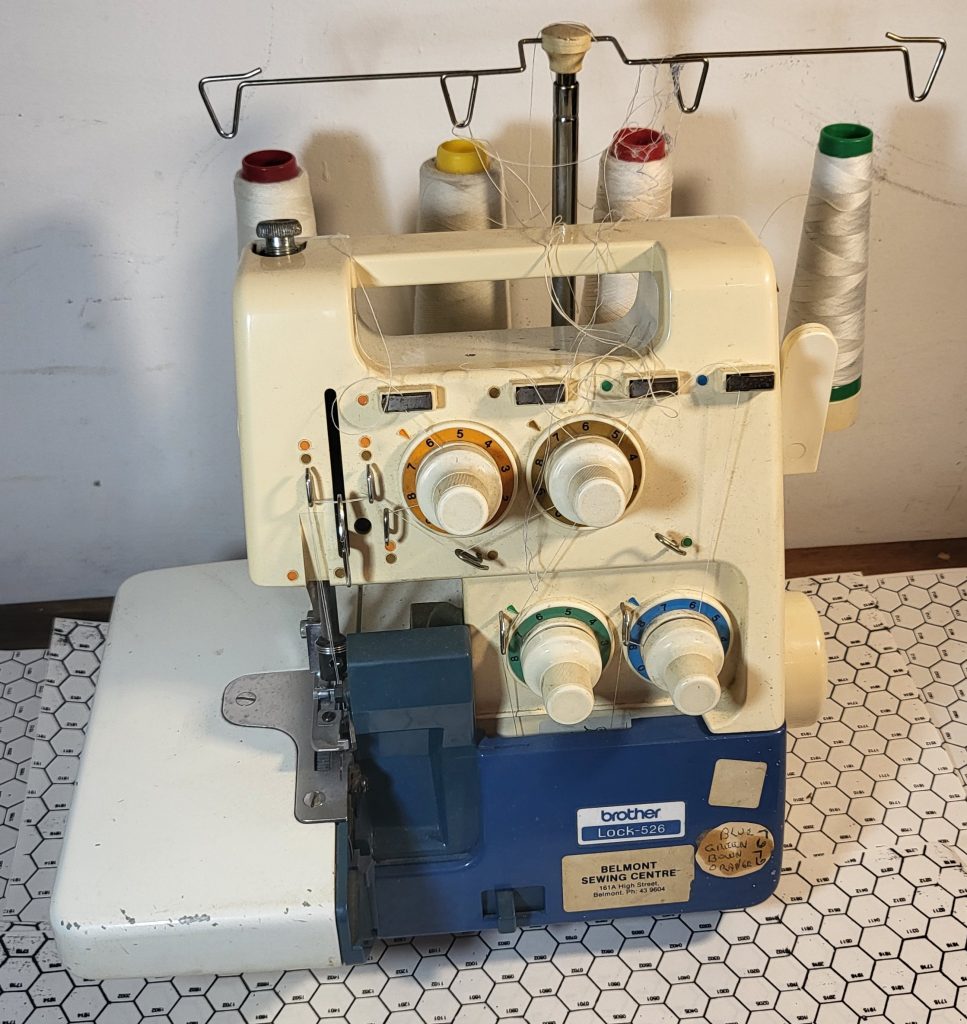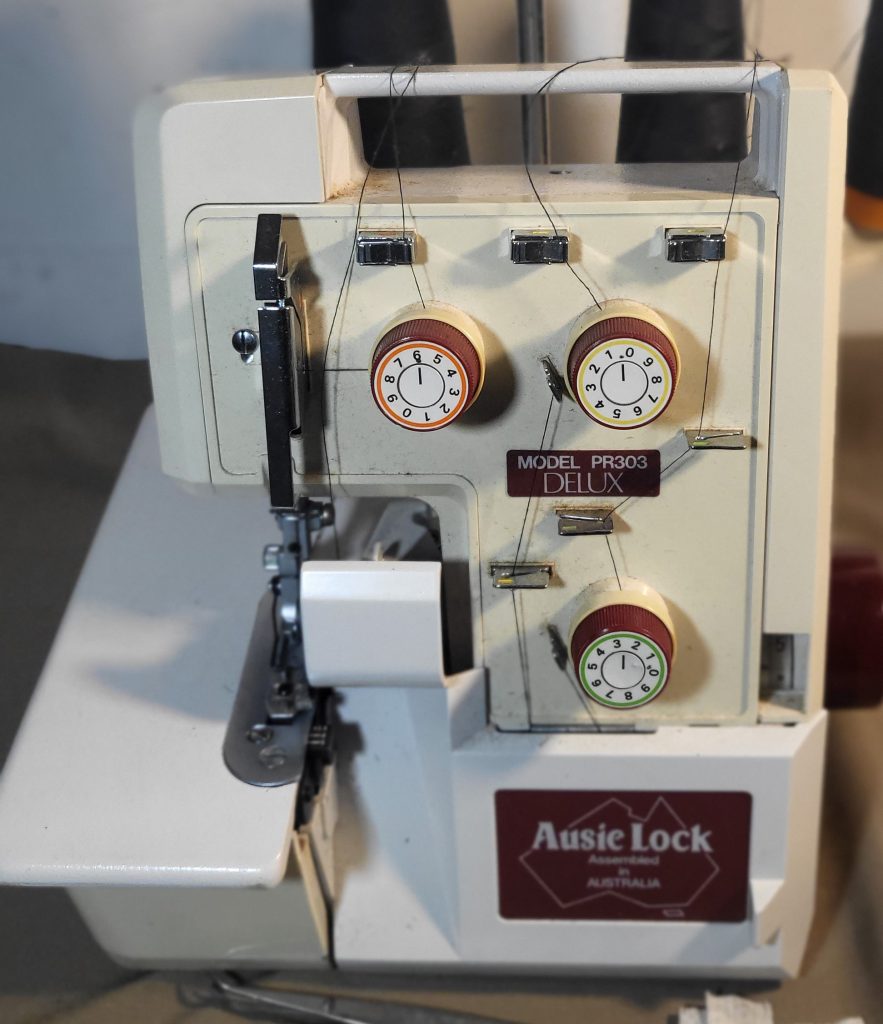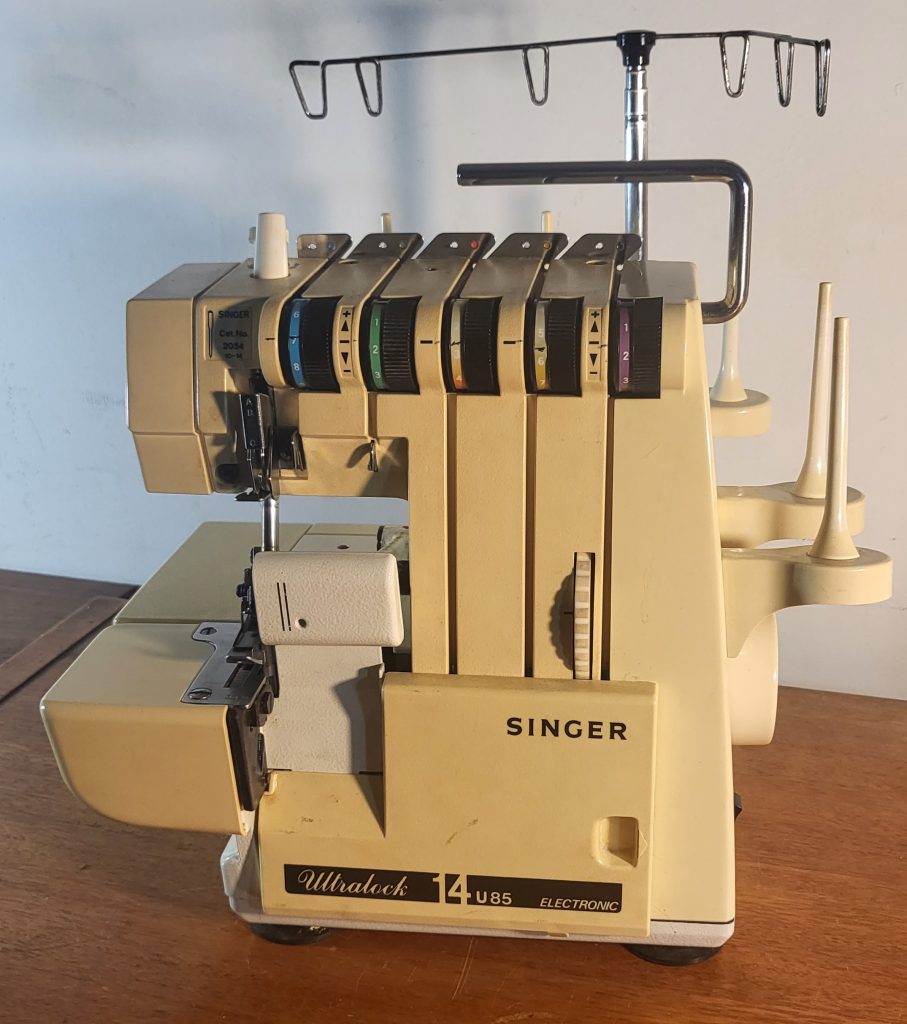My Collection of Japanese vintage Sergers, Overlockers.
Domestic Overlockers also known as Sergers became available in the 1960s. The overlocker was available well before this, primarily as industrial machines. Below are some of the overlockers in my collection, but first a bit more information.
Japan in the 1960s saw the development of the domestic overlocker. These early machines contained very few plastic parts. The domestic overlocker of the 1960s to 1980s can be very well-built machines. However, at this time, as they are in the infancy of the domestic design, they can also be very basic with limited functions, such as width and stitch length.
These 1960s to 1980s Japanese machines are the focus of my collection. There may be the occasional later model machine added to this page and even the odd one not from Japan, as I can’t pass up a bargain and the chance to pull apart, look at, clean and possibly restore and repair a sewing machine. Still, I hope that I will stick to the machines that are mainly metal, vintage and interesting. Many of these machines seem to trace back to the original Juki.
There are a couple of websites that show the history of the Juki machines. I found this one most interesting as it had a basic visual representation of the early models, it is in Russian. History of Baby Lock, chronology by year and model
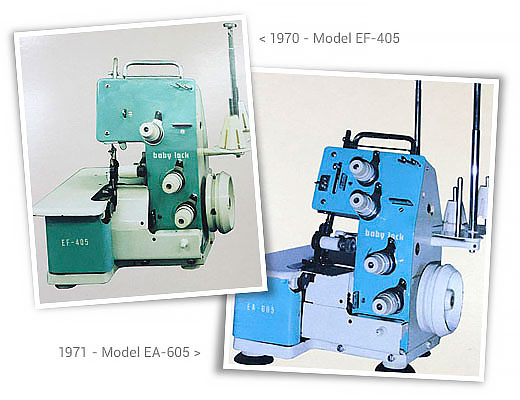
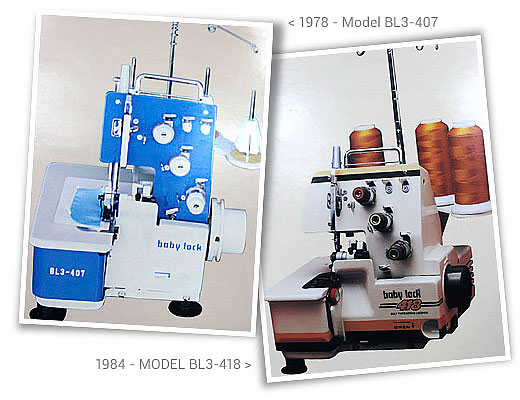

A 1991 Serger book called “The Serger Idea Book: A Collection of Inspiring Ideas from the Palmer/Pletsch Professionals” was recommended to me. It is a wonderful book for beginners. It has an introduction and these wonderful image of sergers/overlockers from this period. I can spot of few of my machines, Elna, Janome (Riccar), Bernette, Singer, etc.
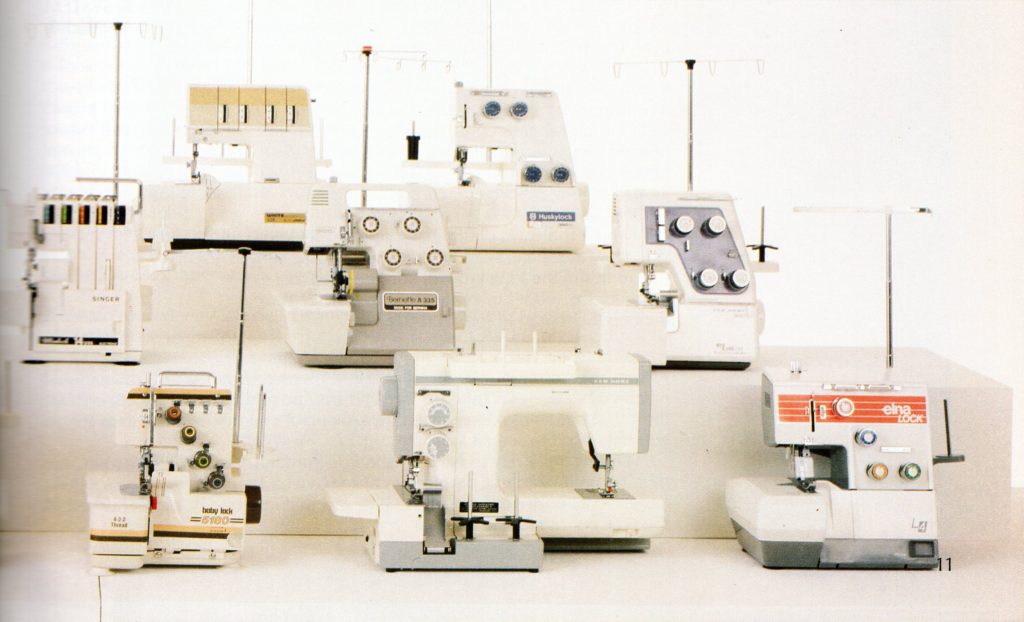
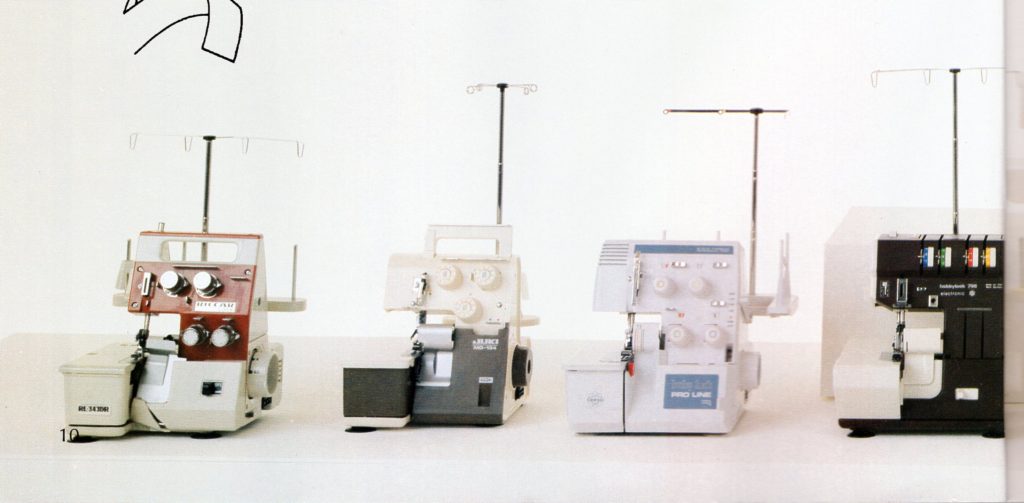
Below are some of my Overlockers / Sergers. I have found all these machines locally in and near Melbourne, Australia. The prices of these machines have ranged from free, through to $150 AUD. Mostly I have been able to pick them up for about $50 (which is just the price for a few coffees). From what I can find at the archives at Home – Trove (nla.gov.au) these machines retailed from $500 in the 70s and 80s. Half of the fun is finding a machine that is not working and bringing it back to life.
Scary, daunting and confusing are just a few of the words that come to mind when I got my first overlocker. Now that I have mastered the threading, I don’t find them intimidating anymore. Just another sewing machine that has a different way of making a stitch or stitches. Yes, they can be fiddley to thread, but that is part of their charm. I can see how new machines with easier threading and differential feed can make it easier for someone to use, if you use an overlocker all the time, but these older machines have something they don’t…longevity and charm. I am a collector first, a restorer second and a seamstress third.
I will try to put them in groupings of badges names and then in rough order of manufacture date, but this can be vague, some machines look older than they are. Most are Juki and rebranded as different companies. I will also upload to my google drive any manuals or instruction books that these came with that can be downloaded for free, see the links on the specific page for the machine you are looking for or go to my google drive and see all the manuals available for free.
My reviews of the following machines are based mainly on the mechanics of the machines. I like to know how they work, how long they might last (i.e how much plastic they have), can I pull them apart and service them myself and my overall impression. Can I get them to make a decent stitch, having been found in the wild? If you are looking for a more in-depth view of the machine from a sewing and function point of view, I suggest you look at Sewing Pattern Review Online Sewing Community as there are many reviews there and some good ones on the machines below.
Reviews on the overlocker, serger….
Found in a shed, was given to me for free.
One of the earliest Juki machines. These may have come out in the 1960s. Still being sold in the 70s.
Mostly metal with only a few external parts being plastic.
4 thread.
Made in Japan.
free
A Juki machine.
These blue machines came out after the green. I now have the 406 and below the 407 in my collection. Not much difference between them to be honest.
Mostly metal with only a few external parts being plastic.
3 thread.
Made in Japan.

A Juki machine.
These blue machines came out after the green. The manual for this machine has an indication that it was a 1979 machine.
Mostly metal with only a few external parts being plastic.
3 thread.
Made in Japan.
60
Another Japanese machine, also Juki.
Circa 1980s.
Mostly metal, similar to the Babylock BL 407
3 thread.
Made in Japan.
40
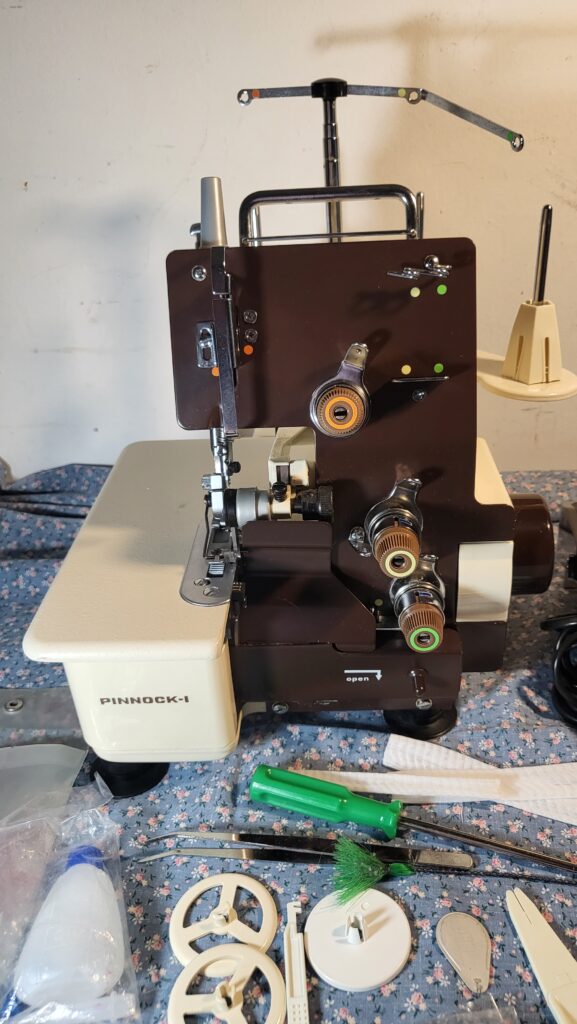
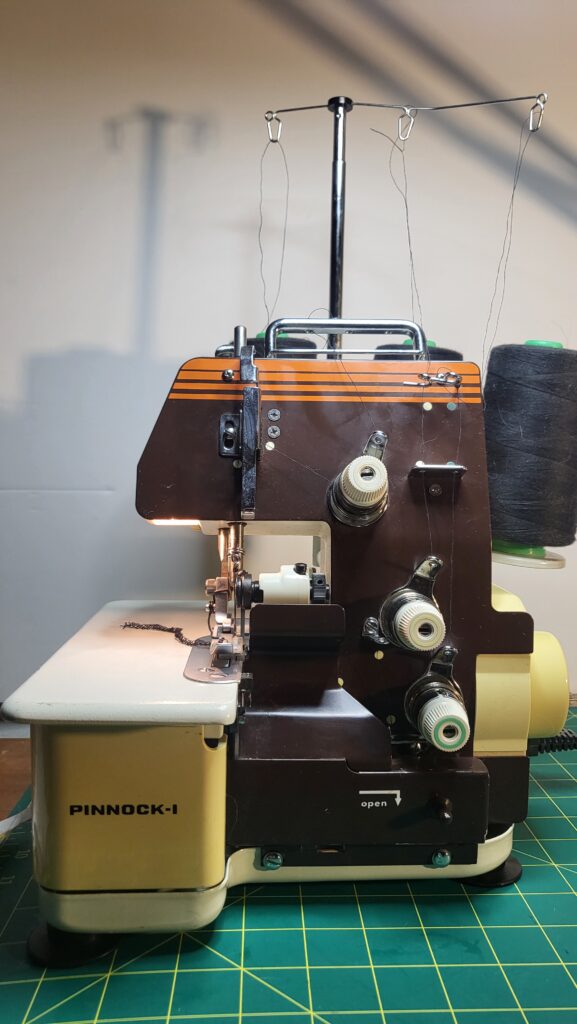
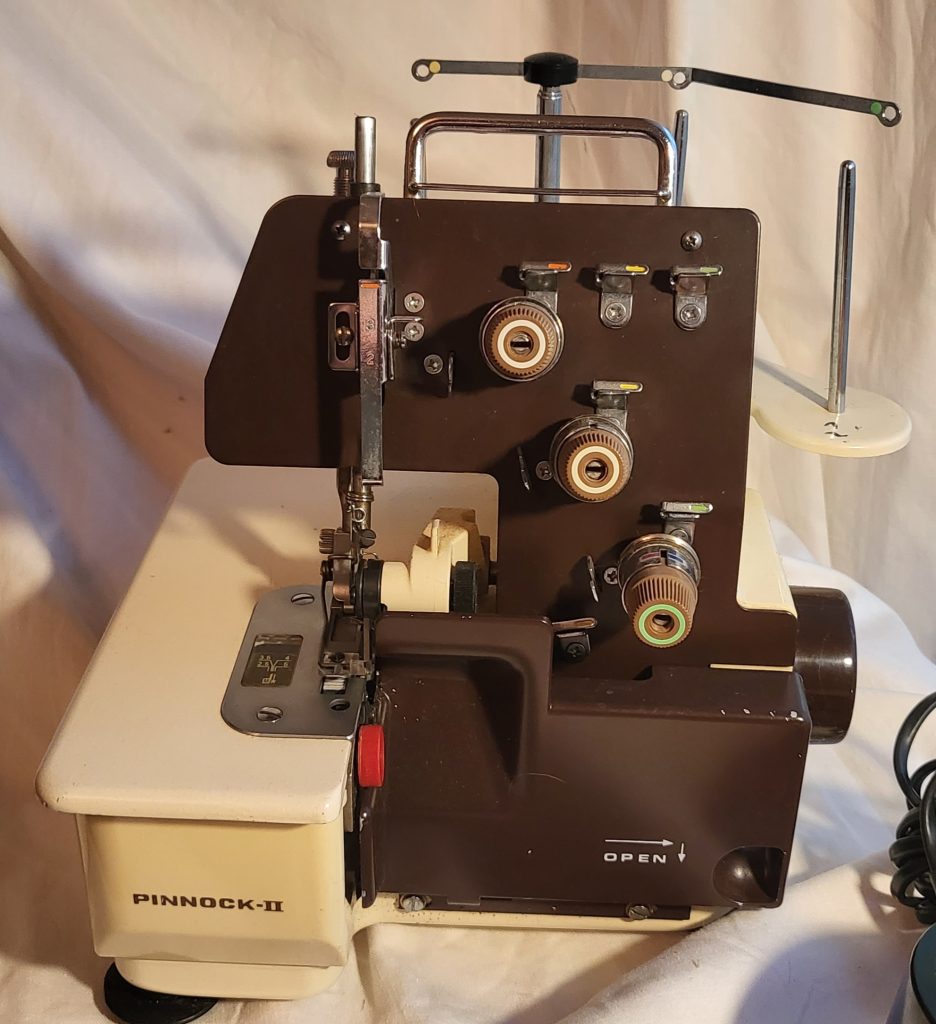
Another Japanese machine, also Juki.
Rebranded around the world, also known as:
New home 743 as well as Baby lock 428. Possibly 1986.
Mostly metal, there are more plastic parts to the externals of this machine, than the earlier machines.
4 thread.
Made in Japan.
75
circa unknown
A 3 thread.
Chinese machine, all metal except for motor, motor cover and spool holder.
Chinese copy of a Baby lock?
Small machine with a small footprint.
50
circa 1985, 3 thread
A 3 thread machine.
All metal internal mechanism. Has the internal wicks for oil, like the early Baby Locks.
50
1987
A 4 thread machine, can be used as a 3 thread.
All metal internal mechanism. Has the internal wicks for oil, like the early Baby Locks.
50
All metal interior, circa ~1984.
Rebranded around the world, also known as:
Riccar, Mammy lock, Portalock.
Also sold as Pfaff Hobby lock HL-603.
This is the three thread version.
Made in Japan. Possibly Juki.
150
All metal interior, circa ~1984.
Rebranded around the world, also known as:
Hobby lock, Riccar, Mammy lock, Portalock.
The handle to carry the machine is different, yet still sturdy as it forms part of the metal chassis.
This machine has differential feed. 4 thread.
Made in Japan. Possibly Juki.
150
This machine is not owned by me. I saw it advertised for sale, but it was out of my reach.
It is however the first I have seen with this model number, so I have given it a page.
If you have this machine, I would be interested in hearing more about it.
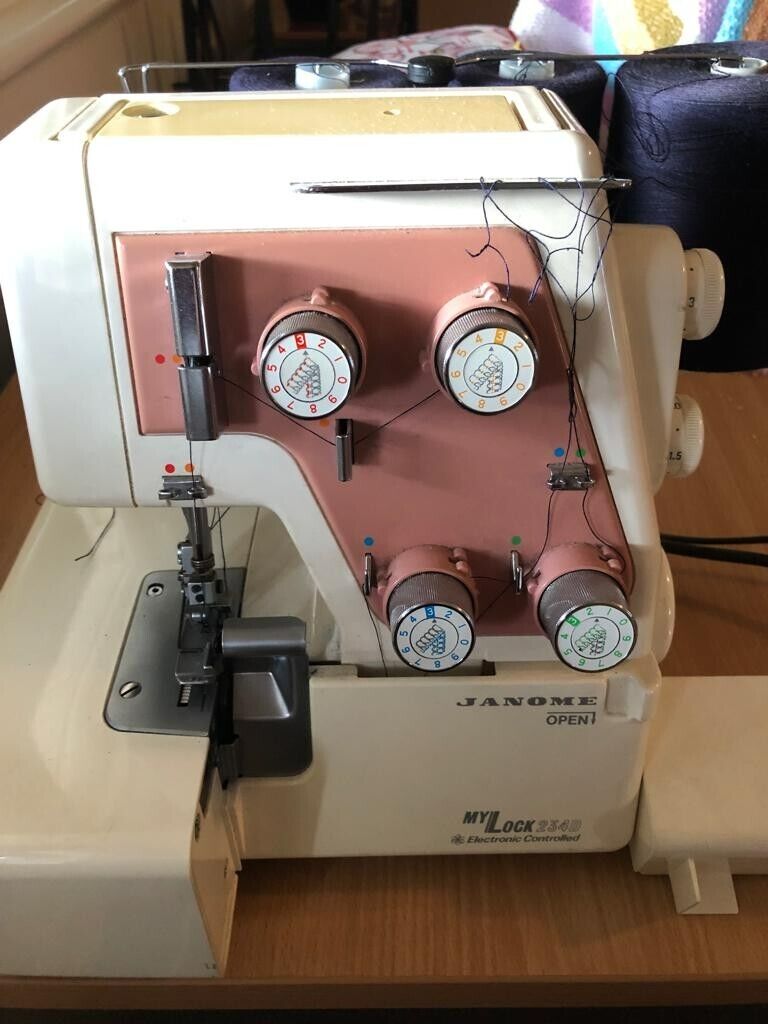
circa ~1987. 4 thread, can be used as 3 thread.
The handle is part of the chassis.
Two plastic working parts. NOT all metal.
Made in Japan.
60
circa ~1988. 4 thread, can be used as 3 thread.
Similar to the MO-234, but this one has differential feed.
Plastic looper gear. NOT all metal.
Made in Japan.
50
All metal interior, circa ~1987.
A basic model. The handle is part of the chassis.
3 thread.
Made in Japan.
90
All metal interior, circa ~1987.
A basic model. The handle is part of the chassis.
4 thread.
Made in Japan.
20
5 thread.
2,3,4 or 5 thread capability.
Differential feed, free arm.
Externals plastic, internals metal.
1990s
Made in Japan.
26
Husqvarna.
All metal interior, circa 1990s?
Differential feed, Electronic.
Mostly plastic exterior. The handle is plastic. I would not trust it to carry this machine.
Made in Japan.
4 thread.
25


